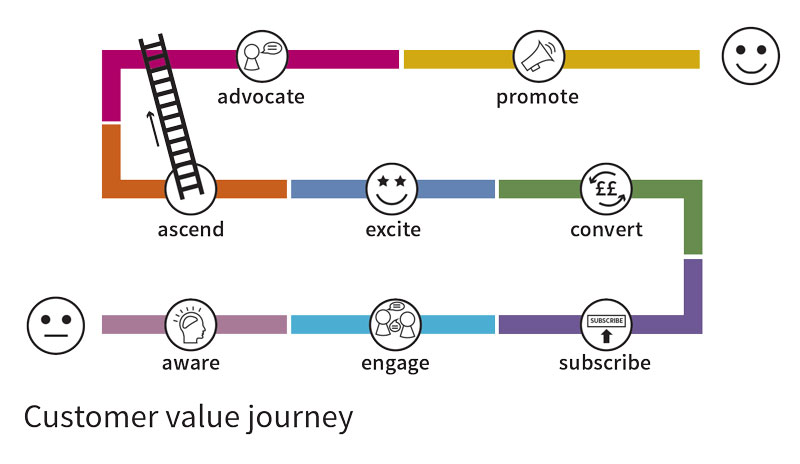2 Apr 2020
As services that are subscription based become an increasingly large part of life, preventive health care plans are becoming the norm in veterinary practice in the UK. Clients ask for them, and most forward-thinking practices now have one, but it’s important to make sure your plan fits your practice...

You may be reading this as an established practice that doesn’t yet have a health plan, or as a start-up wondering whether to launch one.
Perhaps you ticked “launch health care plan” off your to-do list, but something about your plan is out of line with who you are now, or what you want to achieve.
Whichever point you’re at, this is a good time to go back to basics and do a quick audit. Is your current path still heading towards your end goal? What are you doing, and do you know or remember why?
Before looking at the package you offer and making any changes, it’s essential you look at the community within which your practice exists, and identify who your best clients are and what your brand is.
Who are your clients?
Are your clients busy people who need an easier way to keep up with parasiticides and vaccinations, and need to be regularly reminded of the best way to care for their pet? Would they benefit from a home delivery service?
Are your clients budget-conscious animal lovers who’ll benefit from a way to split the cost of essential health care across monthly payments?
How do your clients spend their day? Do they shop at other local independent businesses, read the local paper, or get most of their information online? What do they value – transparent treatment plans and pricing with clear explanations of what’s essential and what’s “nice to have”? Appointments with vets they know or have heard of? Or do they prefer an easy, truncated “essentials” approach and have a just-get-it-done approach?
You have to be relevant to the lives of the people who use your services. Speak to them directly about how you can make their lives better and easier. Without spending time thinking about who they are and what they value, how can you expect to get this right?
This will also help you work out what your messaging needs to be. Are you offering savings for the budget-conscious, or are you offering reassurance to those who just want to do what’s best?
Are you a gold standard practice offering the best of everything? Amazing anaesthetic safety standards, gold cat-friendly status, and embraces – and uses – modern technology.
Are you a community-focused and caring practice that values time with clients and their pets, goes above and beyond to keep in touch with them while their pet is with you for the day, and joins in with the local “in bloom” festival?
When considering the basic information you now have about your demographic, are you giving those people something they want? If they’re looking for a way to budget, are the savings of membership clearly marked? Or are they looking for a plan that offers them VIP service that provides them with total reassurance?
Is your product right for your practice?
Have you checked your margins recently? Your plan doesn’t need to make a lot of money if you’re using it as a gateway to chargeable clinical work – which you definitely should be – but it shouldn’t make a loss. If a price increase hasn’t occurred for a while, it’s time for a review.
If you’ve decided to include unlimited consultations, are you using these as an opportunity to identify and charge properly for any follow-on work?
Your plan should be the driver for your business. Talk to your health care plan members, remind them of the benefits membership brings, and do some targeted marketing to show them you know who they are and how your services can benefit their pet.
At VetSuccess, we use a marketing model called the customer value journey when auditing and strategy planning marketing for practices (below). This follows the journey of your clients from their initial awareness of the practice through to becoming your loyal advocates, and mirrors the stages of healthy human relationship growth.
Successful marketing predictably moves people from one stage of the journey to the next. Left to their own devices, people will invariably fall out of this journey at one point or another and may end up forgetting why they chose your practice in the first place, never mind why they joined your plan, or whether they took full advantage of its benefits.
Look at your touchpoints at each step of this journey. Is your advertising both online and offline letting people know what you offer, and does it encourage them to move seamlessly to the next stage? What’s the call to action? Where’s the incentive? What’s in it for them? Don’t be afraid of an “ethical bribe” – for example, send them to your website and ask for their email address in return for a useful download. Invest in some autoresponders to gently keep in touch with them, and your brand at the forefront of their mind when they need veterinary health care. Remember – people buy when it suits them, not when it suits us.
When your clients first come to the practice, do you exceed their expectations? It’s no longer enough to simply meet them – people want to be left with positive feelings.
Check your processes. What’s your onboarding process like for new clients? Have you given them a welcome pack? A follow-up email saying thanks for registering, letting them know that you want to take the best care of them and their pet, and have designed a health plan to make that possible? What’s your client handover process like? Do you know if a vet has spoken to the client about the health plan and would like you to continue the conversation? Do you do these things consistently for all new clients?
Once clients become members of your health care plan, how do you excite them? Do they know they’re special? Are they reminded of all the benefits now available to them? In such a busy world, people are happy to have relevant monthly e-newsletters – preferably specifically addressing the needs of the species they have registered with you – and reminding them of all the ways you can take the best care of their pet.

Your health care plan may be right for you and your client, and maybe you have a clear and robust marketing plan, but all of this is in vain if your staff don’t truly believe in the plan and feel comfortable talking about the benefits.
A carefully thought out call to action on a well-executed door drop leaflet might get people telephoning to ask for more information, but if they’re met with a lukewarm response or told to “just mention it next time they’re in”, that investment is wasted.
Make sure – through paid-for training or lunchtime meetings – that everyone in your team understands why the plan is best for the practice (predictable revenue, bonded clients, a gateway to chargeable clinical work), the client (easy to do the best thing, year-round protection for their family, potentially expensive conditions can be spotted before they become harder and more costly to treat, budget for fundamental preventive health care), and for the pet (year-round consistent protection, it gets seen more often so health issues can be spotted early, which gives the best chance of a positive outcome).
Then enable your team to have conversations about your plan. This will instantly be easier if they believe membership represents the best choice for your client’s pet. Would your team choose membership for their own pets? And – perhaps the real acid test – would each person in your team recommend membership for their mum’s pet(s)?
Reframing the conversation so it doesn’t feel like sales patter, but like a genuine recommendation for the best interests of the pet, is one of the keys to unlocking your growth potential.
Your practice health plan is exactly that – YOUR practice health plan. It should be a thing of pride for all the team and accurately reflect where you, veterinary medicine and your clients are now. Don’t be afraid to rethink it every now and then. Evolve and be proud.